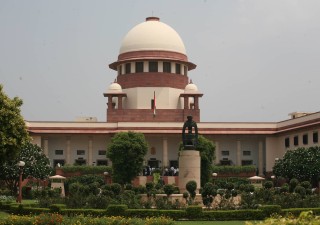India’s Copyright (Amendment) Rules, 2021 released
04 May 2021

On March 30, 2021, India’s Copyright (Amendment) Rules, 2021 were released. The Rules were amended to make them at par with other legislation and advancements in technology.
Among the provisions are those relating to copyright societies.
India’s Copyright Office now has 180 days, rather than 60 under the previous rules, to respond to any copyright society’s application for registration. Extending the time period will allow a more comprehensive examination of the application.
Copyright societies are also now required to publish an annual transparency report for each financial year. The report should detail license refusals, royalties which are collected and distributed and those which are collected but not distributed to authors/copyright owners, deductions from these royalties and other such data.
The Copyright (Amendment) Rules, 2021 also state that copyright societies should have electronic systems for collecting and distributing royalties. These payment systems should also be traceable. If an author/owner cannot be identified or located and as such, royalties belonging to him or her cannot be sent, this royalty should be kept in a separate account. If the royalty remains undistributed after three years, the amount should be transferred to the copyright society’s welfare fund.

“This we believe is a welcome step in accountability and transparency of the copyright societies with encouragement to online modes of payment transactions,” said Dhruv Goel, managing associate at Remfry & Sagar in New Delhi.
As for copyright registration, only one change was introduced in the Rules. Yet, according to Goel, said change is important.
Previously, applicants for a copyright over a software merely filed the first few and last few pages of the source and object code. Now, they may file the first 10 and last 10 pages of the source code. If the source code consists of less than 20 pages, this means the copyright applicant may file the entire source code.
“This may encourage software and app developers to seek registrations of their works. Of course while registration is not necessary to enforce copyright, it is considered prima facie evidence of the ownership. A copyright registration is easy to obtain, cost effective and would assist stakeholders in enforcement actions such as lawsuits, search and seizure operations, combating counterfeiting, custom notices etc.,” said Goel.
Though the amendment is a welcome change, Goel said additional changes can be introduced in the future.
“To cite an example, a website is considered as consisting of ‘different rudiments’ with the component parts falling under different categories such as ‘literary’ for text, tables, underlying computer programmes; ‘artistic’ for photographs, drawings, images; ‘musical’ for music; ‘sound recordings’ for songs; and ‘cinematograph films’ for video films forming a part of the website.”
Goel explained that when the original Copyright Act was drafted, websites were non-existent. The Act was drafted in 1957 and ever since, even with the evolution of technology, a separate category for such works has not been contemplated on.
“Filing several applications for a single website becomes cumbersome and costly for a stakeholder. Amendments over the years have not addressed this issue yet,” he said.
Espie Angelica A. de Leon






